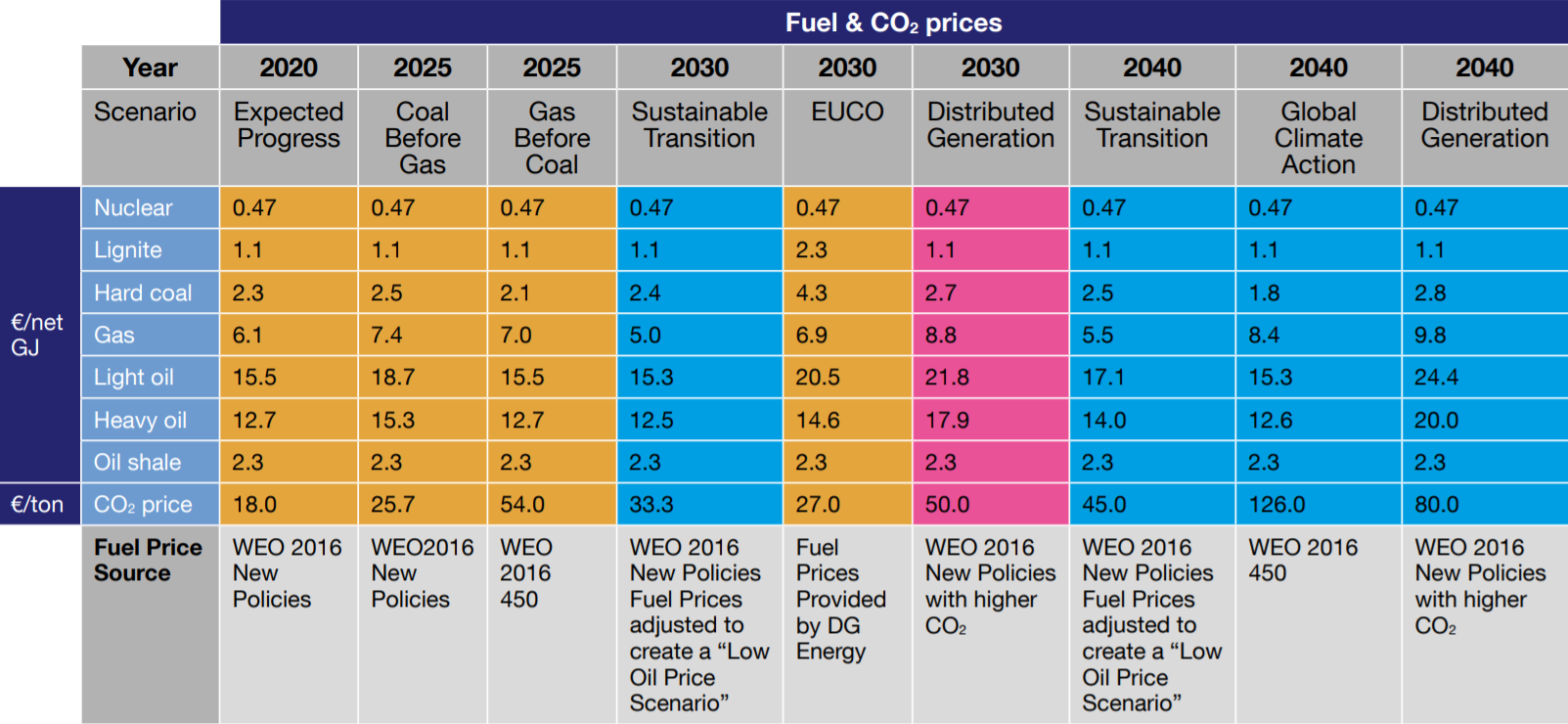Scenario Fuel and Carbon Price Assumptions
Fuel and carbon prices are key inputs to the development process.
The ENTSOs have used the information provided by the IEA World Energy Outlook (WEO), which considers the global context and development that influences commodity prices, as world energy fuel prices for oil, gas and coal are typically hard to predict. The IEA World Energy Outlook provides an annual report on the possible future energy trends and the associated fossil fuel and carbon prices for the 2020 to 2040 timeframe.
The storyline for each scenario is used to map the WEO scenario to the respective ENTSOs counterpart. The majority of the data used reflects that of the WEO 2016 report, which has the scenarios of Current Policies, New Policies and the 450. In order to more accurately reflect the storylines developed, references to the Low Oil Price Scenario
from WEO 2015 were used for Sustainable Transition with a decreased price for natural gas, plus CO2 prices were increased for Distributed Generation. Further insight into these changes, plus the effects and usage of prices can be found within the Annex supporting this report. The fuel prices for the EUCO 2030 scenario are provided directly by DG ENER.
For power generation, these inputs determine the marginal costs of each thermal power unit depending on its efficiency and emissions. Each unit is linked to one fuel price depending on its type. Gas price will be used as the reference price for gas supplies during the TYNDP assessment.
The following table provides a summary of the fuel prices used within the scenario building framework. All prices should be considered as expressed in real terms (in this case as they are based on the WEO prices), in €2015.
 Table 2: TYNDP 2018 Scenarios Fuel & CO2 Prices
Table 2: TYNDP 2018 Scenarios Fuel & CO2 Prices